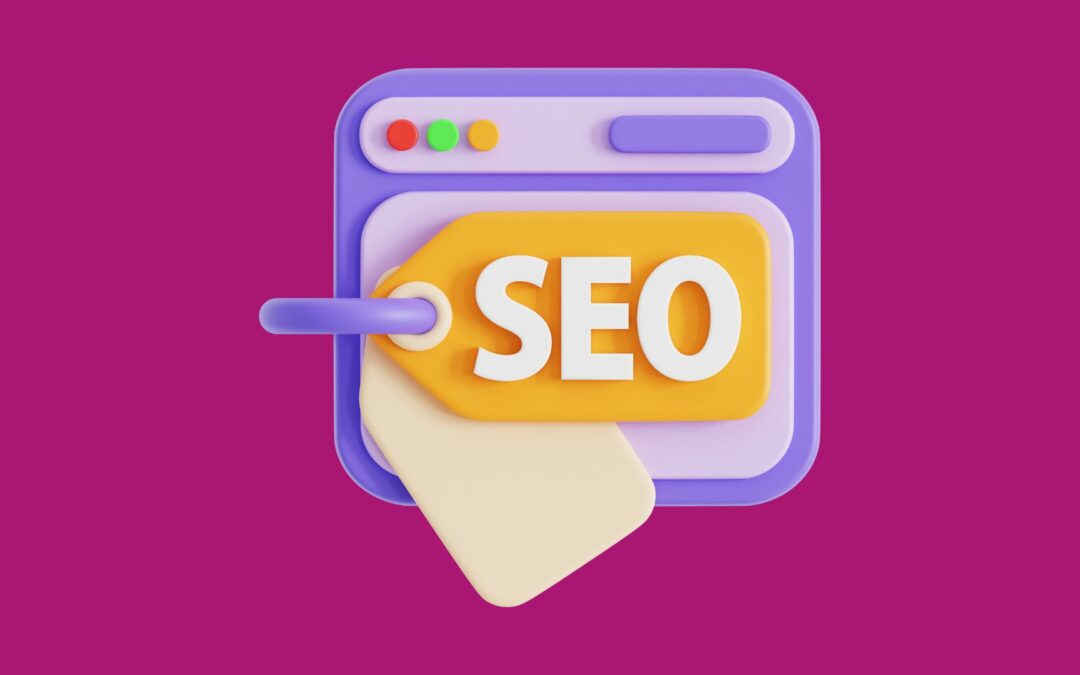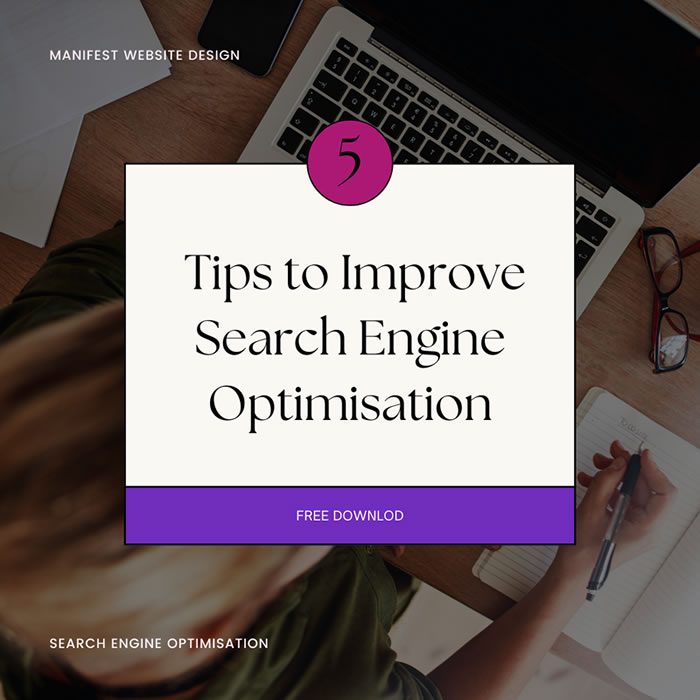To SEO or Not to SEO? That Is the Question
I’ve found that business owners have a love-hate relationship with search engine optimisation (SEO). Or more accurately, a “don’t-understand-so-I’m-going-to-ignore-it” relationship. They know it exists; they know some people swear by it; but they can’t quite put a finger on why it’s necessary.
So can a business survive without SEO? Yes, a business can survive without SEO, especially if it has a strong local or niche presence. However, the lack of search engine optimisation may limit online visibility and make it more challenging to reach potential customers. Ignoring SEO could result in a competitive disadvantage as others in the industry adapt and embrace modern online strategies.
Can a business survive without SEO?
In the right context, with the right strategy, a business can indeed find its way without SEO.
Imagine a bustling marketplace of yesteryears, where traders used to shout at the top of their lungs to sell their goods. That’s the brick-and-mortar world today. Businesses were surviving without SEO long before “Google” was a verb. All that mattered was that they have loyal customers and a solid reputation. However, it’s worth considering how the absence of SEO in today’s digital age might shape your company’s prospects.
Keep in mind that 75% of users never scroll past the first page of search results. Without SEO, your business would end up being a hidden gem buried deep underground, only accessible to those who know exactly where to look. It’s not impossible to find customers without SEO, but it certainly is harder.
Deciding to forgo SEO doesn’t mean abandoning digital strategies altogether. Businesses can turn to social media, email marketing, influencer collaborations, and offline networking to build brand presence and trust.
Digital marketing is about knowing your audience and where to find them. If your audience isn’t using search engines to find your products, perhaps SEO isn’t your battle to fight. Know your strengths, understand your market, and create a strategy tailored to your brand.
Related articles:
Best Ecommerce Platforms For SEO (2023)
Need Great SEO Service in Australia?
Is Digital Marketing a Good Career?
7 Reasons Why Your Website Isn’t Showing on Google + Quick Fixes
7 reasons why your business needs SEO
1) Your website will rank higher on Google
To rank higher means to appear closer to the top of the search results. SEO is the practice that helps your website achieve this favourable position.
SEO is more than just using the right keywords. It involves optimising your entire website to align with what search engines want – and ultimately your potential customers – are looking for. One thing we like to say at Manifest Website Design is “Write for humans first, search engines second.”
2) SEO is more cost-effective
Every business, whether small or large, wants to ensure that they are getting the most value out of their marketing investment.
SEO stands out as a cost-effective approach compared to other paid advertising channels. Unlike paid ads – where you pay for every click or impression – SEO focuses on organic traffic, meaning visitors who find your site through non-paid search results.
Example
Let’s say you’ve got a marketing budget of $10,000 a month. Here’s a possible breakdown:
- Traditional Advertising (magazines, newspapers, etc.): $3,000
- Radio Advertising: $2,000
- Pay-Per-Click Ads (Google, Facebook, etc.): $3,000
- Social Media Promotions and Sponsored Content: $2,000
Now, these aren’t bad methods by any means, but let’s be real: They’re like throwing spaghetti at the wall and hoping something sticks. You’re targeting everyone. Let’s introduce SEO into the mix and see what magic we can make with that same $10,000:
- SEO Services (including content creation, keyword optimisation, link building): $3,000
- Content Marketing (blogs, videos, etc., aimed at your target audience): $2,000
- Email Marketing (to engage with interested customers): $1,000
- Social Media Targeted Advertising: $2,000
- Retargeting Ads (to reconnect with visitors who showed interest): $2,000
Notice the difference here? Instead of haphazardly throwing your money around, you’re strategically placing it in areas that directly connect with the people who are looking for what you’ve got.
SEO is a gift that keeps on giving. Unlike traditional advertising, where the moment you stop paying, you vanish into thin air, SEO builds upon itself. The work you put in today will continue to bear fruit long into the future.
Pro tip: Adopting a cost-effective SEO strategy doesn’t mean abandoning all other marketing efforts. It’s about integrating SEO into your broader marketing plan, understanding where it fits, and how it can complement other channels.
Related articles:
How to Do an SEO Audit – Manifest Website Design
3) You’ll outrank your competitors
If your competitors appear above you in search engine results, they’re likely to capture the attention of potential customers first.
According to a study by Chitika, the first position on Google search results receives 33% of the traffic, while the second receives 18%, and the numbers continue to decrease sharply from there. These figures underline the importance of outranking competitors, as even one position higher can make a significant difference in traffic.
Another report from Ahrefs highlights that the top-ranking page also ranks for nearly 1,000 other relevant keywords in the top 10 positions. This broad reach further illustrates the competitive advantage gained through effective SEO.
4) Attract nearby customers
You know that feeling when you’re hungry, and you Google “best pizza near me”?
That’s local SEO at work, and it’s how many of us discover local businesses. If you run a brick-and-mortar store or serve a specific area, attracting nearby customers is likely crucial for you.
Many people, perhaps even yourself, regularly search for businesses “near me.” This means that local SEO strategies are a necessity for connecting with your community. It’s the digital word-of-mouth that gets people talking about what you offer, right where you are.
So think about what people in your area want. Maybe it’s quick service, unique products, or that unbeatable, friendly atmosphere. Your website and online presence should reflect this local flavour.
Pro tip: Leverage local SEO strategies like Google My Business to make sure your address, phone number, and business hours are easily accessible. Encourage happy customers to leave online reviews. Share local news and events on your blog or social media.
5) Get measurable results
According to HubSpot, 61% of marketers say improving SEO and growing their organic presence is their top inbound marketing priority. Why? Because with SEO, every action can be tracked and analysed. They have a way to measure how well they’re doing their job.
Example
Imagine you own a local pet grooming salon, “Pawsome Grooming.” You love dogs, you love cats, you love every fluffy creature that walks through your doors. Business is okay, but you want to grow. You want to become the go-to spot for every pet owner in town. But how?
You’ve tried handing out flyers at the local park. You’ve posted on community Facebook pages. You’ve even run a cute commercial on the local TV station. And yet, your phone isn’t ringing off the hook.
Enter SEO.
You decide to invest in SEO by optimising your website, starting a blog filled with pet care tips, and using the right keywords that local pet owners might be searching for online. Here’s what happens:
- Increased visibility: Your website starts ranking higher on Google. Suddenly, when someone searches for “pet grooming near me,” your salon pops up on the first page.
- Targeted traffic: The people clicking on your site aren’t just random folks; they’re local pet owners actively looking for grooming services. They’re already interested. Now, they’re on your site.
- Measurable results: You start tracking the metrics. How many people visit your site? How long do they stay? What’s the conversion rate from visitor to customer? All of these can be tracked and analysed.
Fast forward six months, and let’s see some results:
- Before SEO: 100 website visitors per month, 2% conversion rate = 2 new customers per month.
- After SEO: 1,000 website visitors per month, 5% conversion rate = 50 new customers per month.
After months of hard work, your customer base just grew by leaps and bounds, and you know exactly how it happened. You can see the numbers, the growth, and the ROI on your investment. And the best part? You can keep tweaking and optimising, learning from the data to make even smarter decisions going forward. With SEO, you’re not shooting in the dark.
6) SEO builds upon itself over time
As mentioned, unlike traditional advertising that can stop the moment you halt investment, SEO is like a snowball rolling down a hill. It gains momentum over time. It’s not a one-time effort but a continual process where every optimisation strategy, every piece of content, adds to the whole.
The effects of SEO might not be immediate, but they are lasting. Your initial investments in optimising your site, researching keywords, and crafting quality content lay the foundation for future growth.
A study by Ahrefs showed that only 5.7% of newly published pages reached Google’s first page of search results within a year. This illustrates the time and effort needed for SEO to bear fruit. But once there, the rewards can be significant and long-lasting.
Old posts can still contribute a big chunk of your traffic. After all, great content has enduring value, continuously drawing new audiences even after its initial publication. Here’s a great article by Hubspot about “The Blogging Tactic No One Is Talking About: Optimizing the Past.”
Think of your SEO efforts like a retirement fund. You’re not just putting money in to take it out next month; you’re investing for the future. Consistent contributions, even small ones, can lead to substantial growth over time. Over time, you’ll find that your online presence becomes a robust, self-sustaining ecosystem that continuously draws in new customers.
7) Don’t get left behind by the times
The digital world is in a constant state of flux. What was cutting-edge yesterday might be obsolete tomorrow. Here are some digital marketing trends you might want to take a look at:
- Mobile optimisation: More than half of global web traffic comes from mobile devices. If your site’s a hot mess on a smartphone, you’re waving goodbye to potential customers.
- Voice search optimization: Tailoring your website to answer questions that might be asked through voice-activated devices like Siri, Alexa, and Google Assistant.
- Content quality & relevance: Google’s getting smarter, and it rewards websites that offer genuine value. The era of keyword-stuffing is dead.
- Local SEO: If you’re a local business, you want locals to find you, right? Local SEO helps put your business on the map, both figuratively and literally.
- AI and Machine Learning: Personalisation is the future. The more you can customise a visitor’s experience to their needs and interests, the more likely they are to stick around.
- Video content: Video is engaging and can explain complex topics in a digestible way. Plus, it’s favoured by many search algorithms.
You don’t have to be a tech wizard to keep pace with SEO trends. Follow industry blogs, attend webinars, or even consider hiring an SEO expert if needed (you’re already reading the blog of one).
Don’t pay the price of neglect
Look, nobody’s saying you should become the next big SEO guru. We just want you to see the importance of playing the long game in business. The price of neglecting SEO isn’t just a missed opportunity or a lost sale here and there. It’s a gradual erosion of your visibility, relevance, and connection to the very people who keep your business alive: your customers.
Imagine you’re on a bustling street filled with shops. Every day, some shop owners are repainting, redecorating, and attracting crowds with their new, enticing displays. Meanwhile, you keep your shop looking the same, year in, year out. Slowly but surely, people stop looking – they stop walking in.
But here’s the silver lining: It’s never too late to start. Your customers are out there, searching, clicking, ready to find you. Learn how we can get your website in front of the eyes of your customers by scheduling a discovery call today.

ANA AMISTAD
About the Author
Ana is a Content Manager at Manifest Website Design specialising in digital marketing, SEO, and meaningful stories. Her byline is often found 3,000 feet above sea level.
After hours, she enjoys psych thrillers, reading, dying in video games, and having good conversations. You can reach out to her on LinkedIn.




